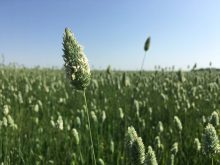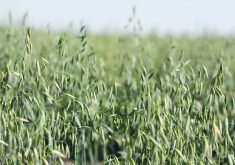Producers haven’t been contracting much production, which could mean they are anticipating higher prices this year
Glacier FarmMedia – WINNIPEG — Despite declines in production and exports during the current year, canaryseed may bounce back in 2024-25.
David Nobbs, chair of the Canary Seed Development Commission of Saskatchewan and pulse merchant for Purely Canada Foods, said exports are on pace for 110,000 to 120,000 tonnes in 2023-24, compared to 150,000 to 160,000 in a typical year.
Statistics Canada projected 125,000 tonnes of exports for 2023-24 compared to 147,000 the previous year.
Nobbs cited competition from other countries and a lack of demand in Europe as reasons for the reduction, as well as a five cent per pound discount for new crop compared to old crop, U.S. millet prices at US10 cents per pound and a Brazilian ban on Canadian canaryseed due to phytosanitary concerns.
Read Also

Huge Black Sea flax crop to provide stiff competition
Russia and Kazakhstan harvested huge flax crops and will be providing stiff competition in China and the EU.
“It’s not really one thing. It was a number of things that impacted us,” he said.
While these obstacles may dim the outlook, things are looking up for the Canadian canaryseed market, according to Nobbs. Prices for new crop have stayed the same compared to last year, at around 36 cents per lb.
“If you’re an eastern Saskatchewan grower, I think canaryseed makes a lot of sense this year compared to last year. I think acres are going to increase. I don’t think acres are going to be huge, but acres are going to increase,” Nobbs said, estimating between 300,000 and 330,000 seeded acres. That is more than Agriculture Canada’s forecast of 291,600.
Nobbs doesn’t trust the accuracy of StatCan’s 2023-24 acreage numbers, which showed nearly 257,000 for canaryseed.
“Crop insurance had seen a rise of acres in Saskatchewan (in 2023-24) whereas StatCan showed a drop,” he said.
“I think (acres) will be at 300,000, close to last year, but the increase is probably 10 per cent higher at 330,000.”
Nobbs said there is a lack of contracting, which he interprets as growers anticipating higher prices. Last fall, canaryseed prices rose to 46 cents per lb. before settling lower.
He touted canaryseed as a high-priced crop that grows well under wet conditions with few fusarium concerns.
“Generally, you’re going to have 50 per cent of the volume in a wheat crop, but you have double the price or even higher.
“I view the durum market looking pretty weak this year and if I could grow all canaryseed, I would. Whether or not growers will (drop durum completely), I don’t know.”
A normal-sized canaryseed crop would likely produce prices in a range of 32 to 38 cents per lb., according to Nobbs, who added that a larger crop could be worth 30 cents per lb. and a smaller crop could fetch 40 cents per lb.
“The outcome is going to be important. Some of the other things may not fix themselves. I don’t know what Colorado or European millet values are going to be. I think what hurt us a lot are millet prices.
“Even flax is cheaper as a bird food … There’s a lot of stuff to happen between now and next harvest. I guess we’ll wait and see.”


















